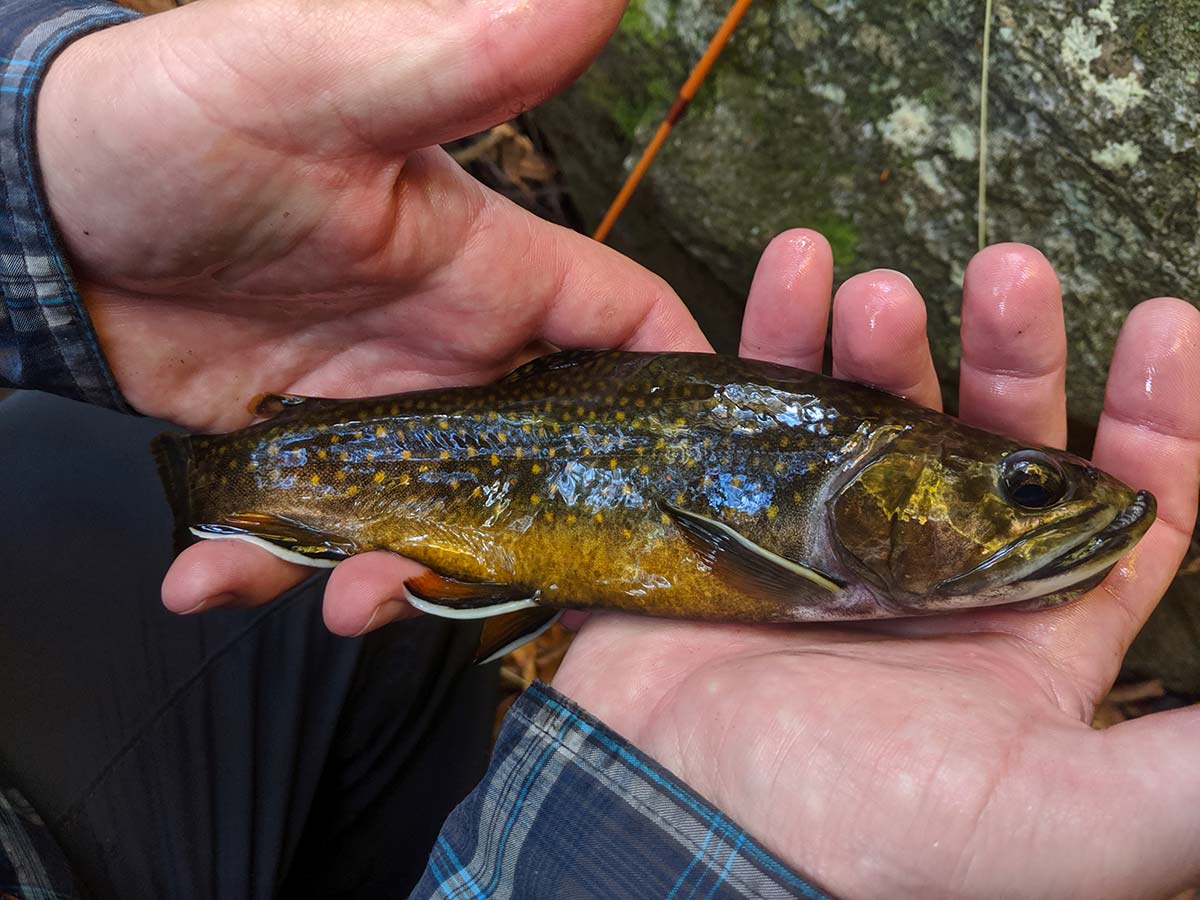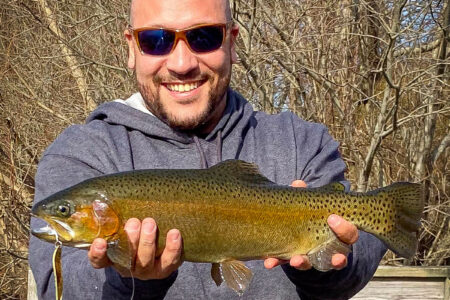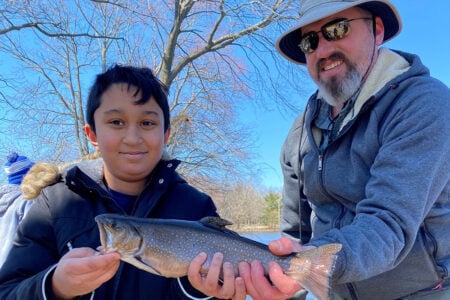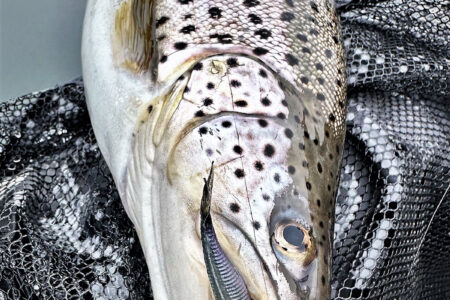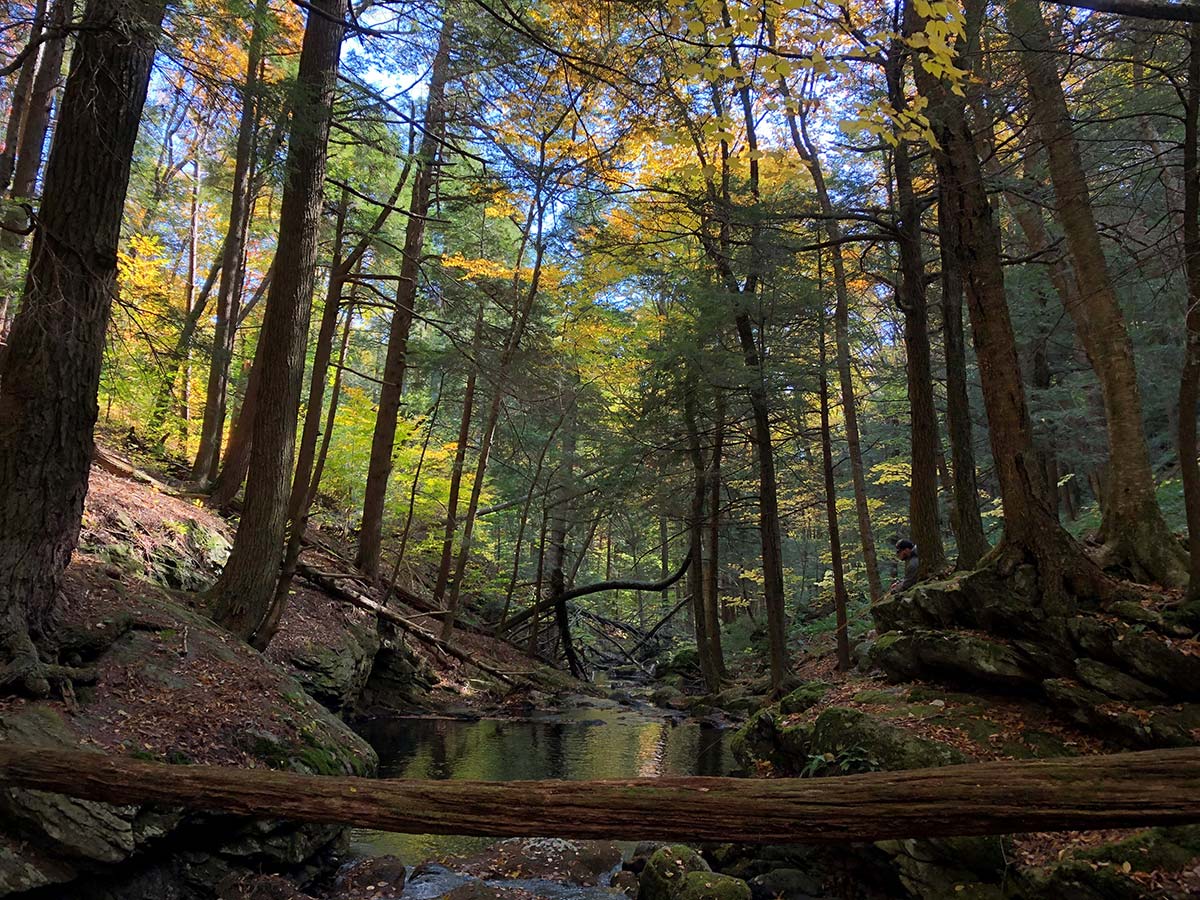
Long hikes for New England’s only native trout.
Every year some friends and I take a walk in the woods. We hike into the wilderness and camp near a small blue line on a map, a stream far from any paved roads or signs of human development. What started as a one-off hike long ago has blossomed into an annual tradition we look forward to every year.
The hike is timed to coincide with one of the most beautiful times of year here in southern New England. Wherever we walk, there is always a constant – a stream runs somewhere along the trail. And usually, if we’re lucky, the stream is home to some very special fish.
It’s no secret that fall in New England is an extraordinarily scenic time to head for the hills and take in the explosion of color put on by the changing leaves. There is another natural show of beauty that takes place during the fall that is lesser known amongst leaf peepers and some anglers alike. The beauty of a brook trout in spawning colors is hard to capture in words. As these fish get ready for the important event, their already stunning features become even more pronounced. Combining two hobbies together – backpack camping and small stream fly fishing – brings the best of both worlds in the revelry of the season.
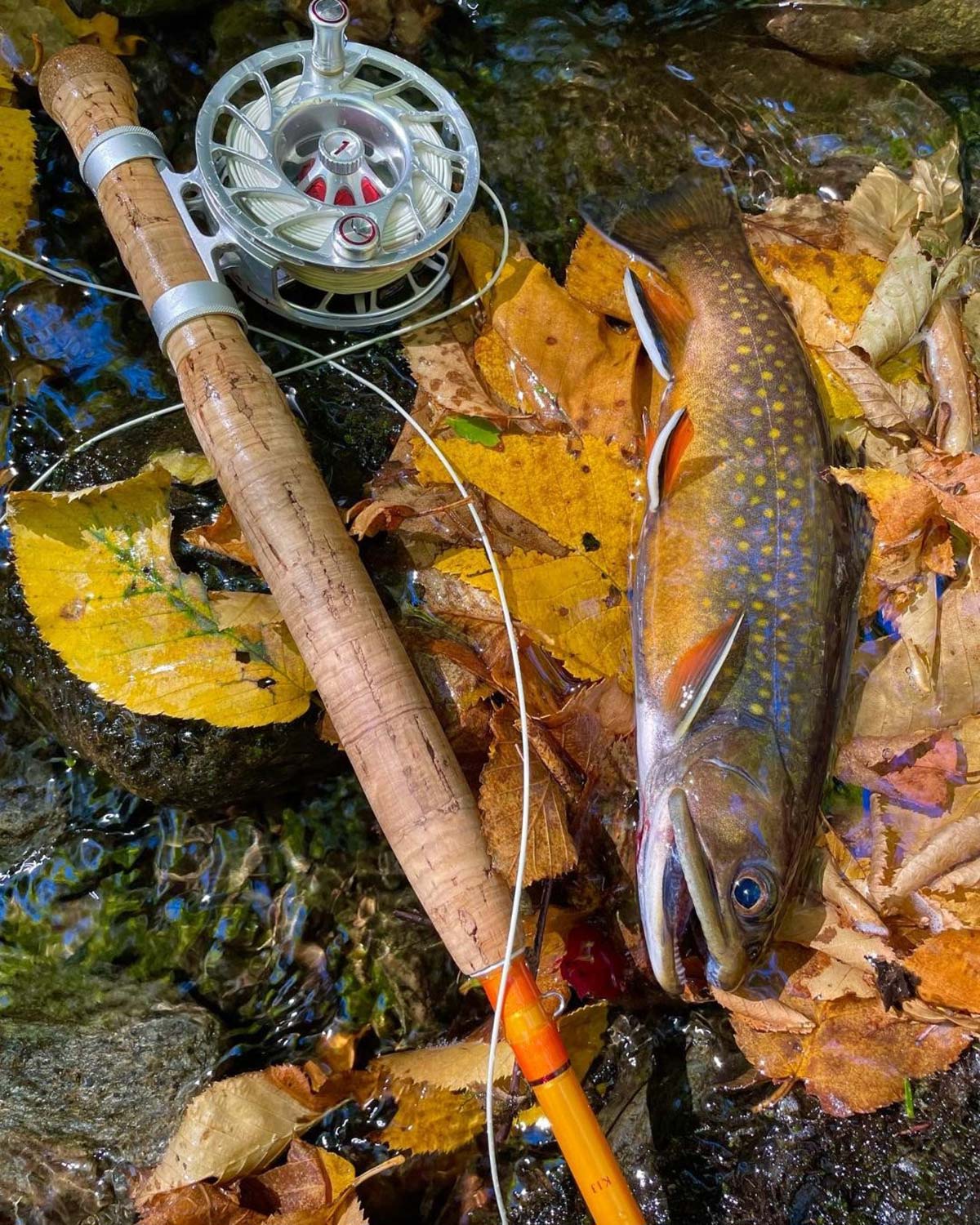
Special Places, Special Fish
Brook trout are not really trout at all but a species of char native to our waters here in southern New England. These highly colorful and often aggressive fish can sport nearly every shade of the palette. Their natural range consists of Canada and the eastern United States throughout the Appalachian Mountains as far south as northwestern Georgia. These fish have populated our streams, rivers, lakes and ponds since the last glaciers receded many thousands of years ago. Brook trout range in size depending on the habitat where you find them. While “brookies”, as they are often referred to, can grow large in some parts of northern New England and Canada, they are more likely to be on the smaller side, say less than 12 inches in our neck of the woods. This is true especially in the small mountain streams we walk and fish each fall where a fish over 8 inches is a cause for celebration.
Of course, size is all relative and the brookies we catch are special not just for their beauty but also for what they represent. As our only native species of trout or char in our region, the fish belong here. While catching other species of introduced trout like rainbows and browns can be thrilling, they wouldn’t be here if people hadn’t propagated them. In fact, stocking of some brooks and streams has directly led to the decline of brook trout populations, and in some cases their extirpation. Some of the remote streams that we hike and fish likely have populations of brook trout that date back thousands of years, untouched and generally undisturbed by outside interference.
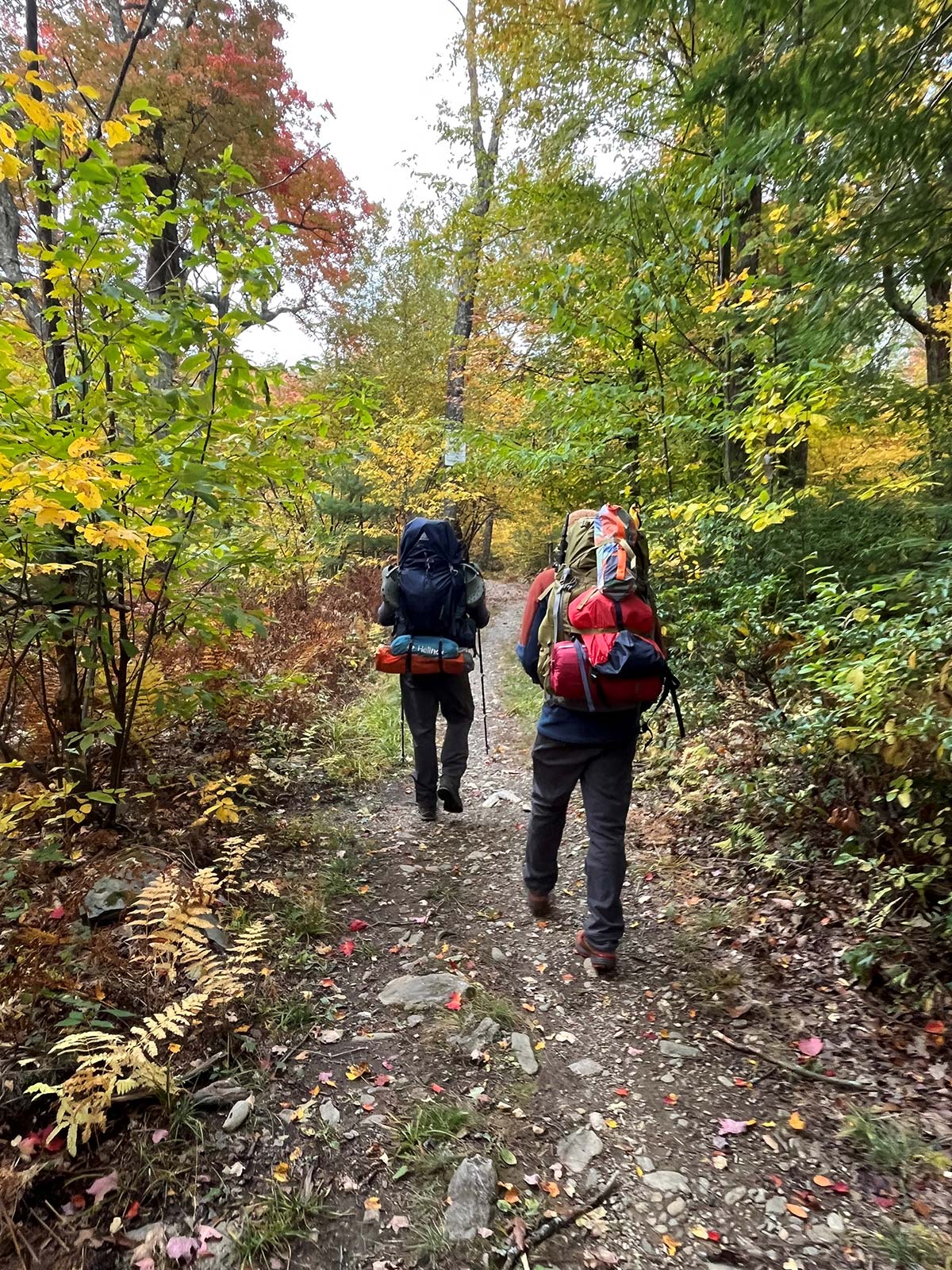
Brook trout need cold, clear water to survive. Unfortunately, human development has destroyed much of their natural habitat. In comparison to the time before European settlement and the industrial age, very few streams and fewer lakes and ponds are now home to the pristine conditions brook trout need to survive. This makes visiting the places that brookies call home all the more special. They tend to be off the beaten path, far from development. Forests with dense canopies, Hemlock trees and thick Mountain Laurel provide shade keeping spring-fed trickles and mountain streams cool. The clear water coursing through the boulders, plunge pools and falls provide the oxygen rich water they thrive in. While there are exceptions, often times the very conditions brook trout need for their existence are the visually dramatic landscapes that hikers are drawn to. The networks of hiking trails throughout the range of the Appalachian foothills often lead along streams that are home to these special fish.
Gear And Tactics – Keep It Simple
Backpack hiking and angling require packing light as a priority. I’ll leave the camping gear to be covered by the plethora of resources available via the internet. One of the beauties of small stream fishing is the simplicity of it. You don’t need fancy gear or boxes and boxes of ornate flies to entice brookies to bite. A small stream fly rod, usually under 7 feet in length with a floating 1- to 3-weight line on a small reel is all that’s needed to cover the pools, plunges and riffles. Small stream leaders are usually short so that compact casts can be made in tight quarters. I try to keep my leaders no longer than my rod – about 6 feet and usually finish them with 5x tippet of no more than 6-pound test. You can certainly use lighter line depending on the scenario you find yourself in, but I tend to use something a bit heavier to try and reduce breakoffs when I inevitably get hung up in trees and brush.
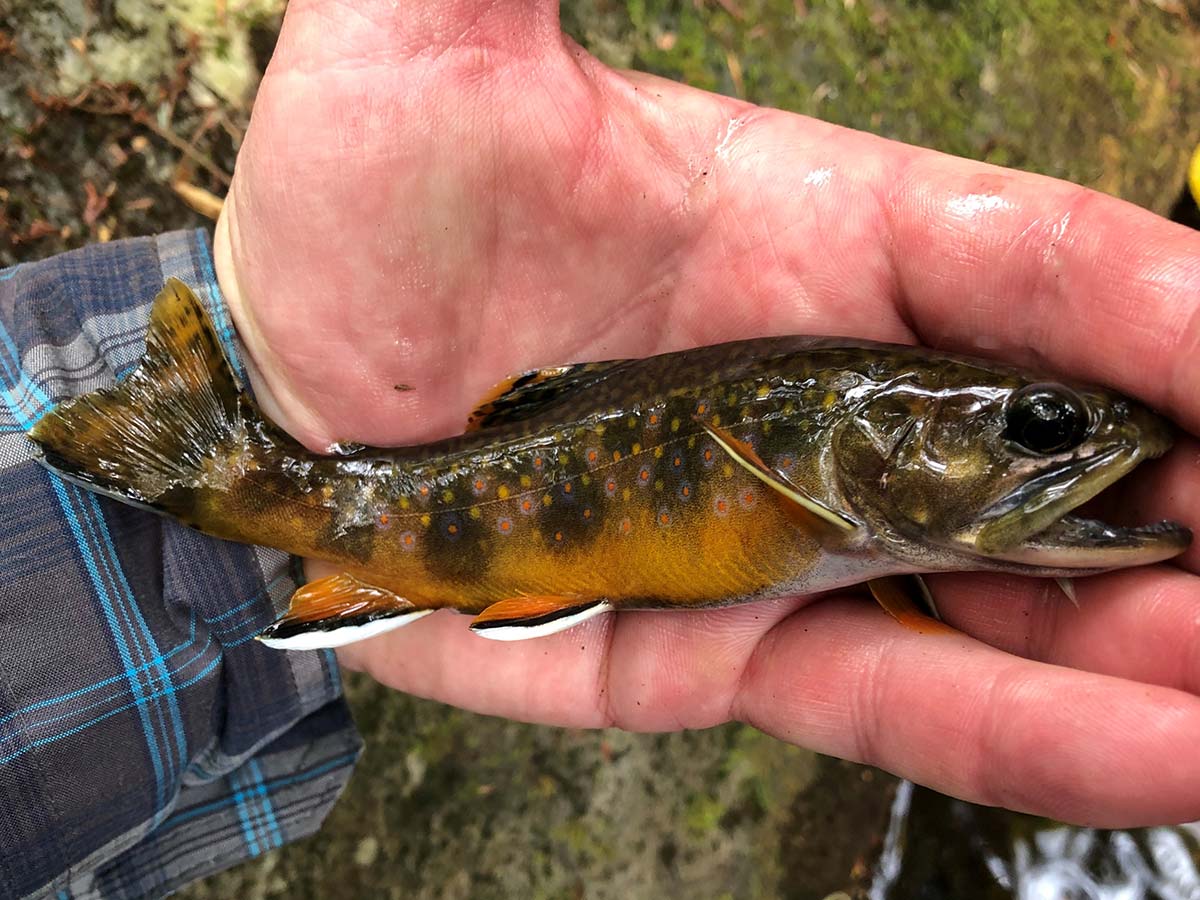
Brook trout, in small streams especially, are known to be aggressive. They will swipe at most buggy looking flies both on and underneath the surface. A small double-sided box that carries enough flies to fit a few applications is all that’s needed on the trail. Fly selection should cover at least three presentations: surface dries, sub-surface nymphs and wet flies, and small streamers. While any one of these categories of flies might be enough for a day or three on the trail, having a mix helps to cover bases and keeps things interesting by mixing up your approach. There may be more effective ways to catch brook trout in the fall but seeing multiple fish porpoise and slash at a dry fly on the surface is a boatload of fun. Having some weighted simple nymph patterns on hand for faster plunges is always a good idea. If I had to bring only one type of fly with me into the woods for a small stream brookie trip it would be a micro-beaded wooly bugger. This versatile pattern can be dead drifted, jigged, swung or stripped and the extra weight helps get it down into any deeper pools you might happen upon. Beyond its versatility, the little buggers have been selected by the fish themselves to be a brookie favorite over the years.
Beyond your rod, reel and fly selection, there are just a handful of other items I like to pack along on a backpack trip that come in handy. Nippers and forceps are a must. Fly floatant and a drying agent (like Frog’s Fanny) are often helpful. A couple of tiny floats while not necessary can be a nicety in niche situations. I like to bring a light sling pack in my larger pack that comes out when it’s time to fish. This pack carries the flies and extras along with a water bottle and a snack.
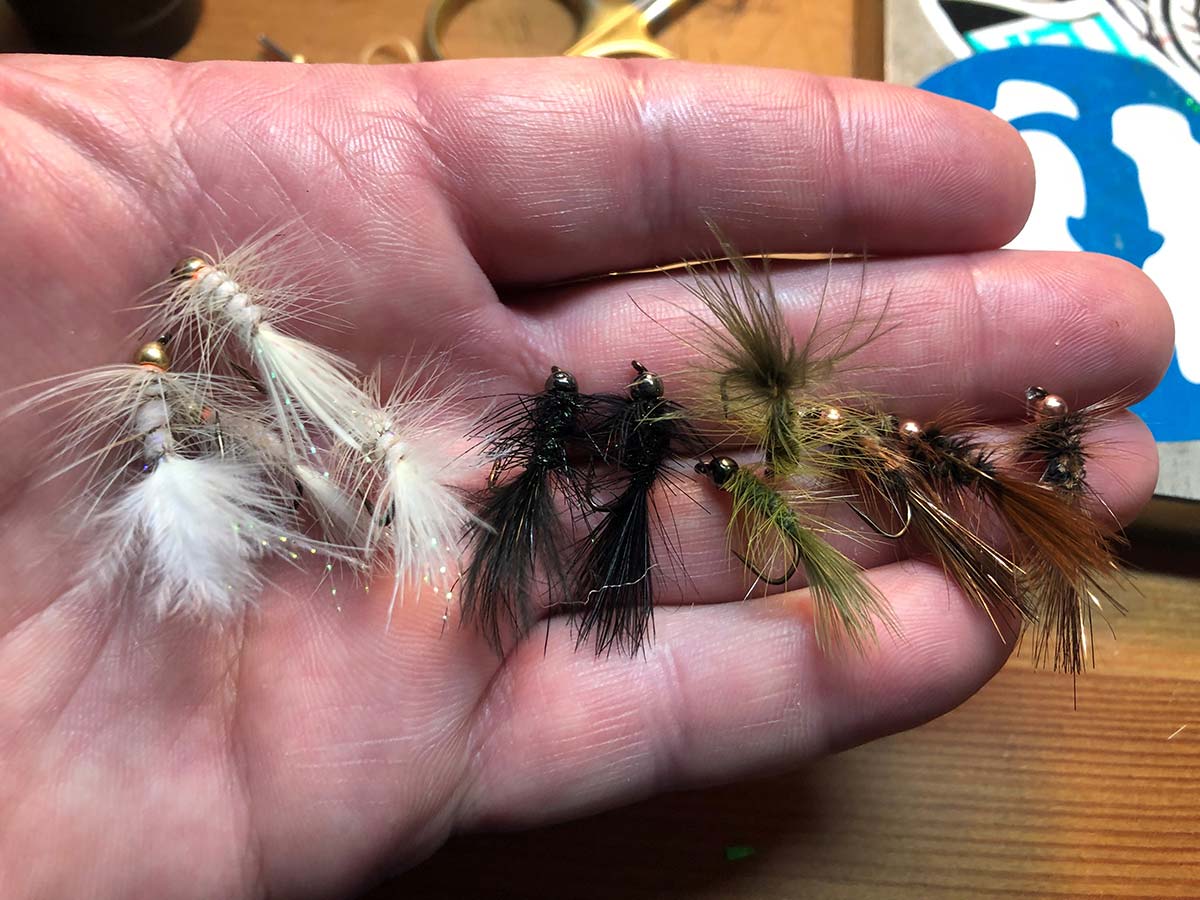
A Delicate Situation
One thing my partners and I take very seriously on these trips is respecting the places we go and the fish we encounter there. The pristine environments that are home to brook trout are that way because they experience so little human influence. It is paramount that we make sure to have as little impact as possible. Part of doing this is the way we approach the water. Taking your time and creeping up to the areas we intend to fish doesn’t just help not to spook our targets, it also keeps us from stepping on plants and other life.
The same goes for the fish. We are strictly catch and release on these trips. Part of a successful catch and release process also includes using barbless hooks and practicing proper fish care with wet hands. Because the little char are preparing to spawn and populate the next generation of brookies during the fall, it’s also important to make every attempt not to disturb that process. Avoid any actively spawning fish. If you observe any redds, or fish nests, don’t fish near them. We also make every attempt possible at staying out of the streams we fish so as not to alter their bottom in any way.
Wild native fish live in wild places. Pairing the hiking and fishing experience is a great way to soak in the spirit of the fall season. The trail, the scenery, that noticeable change of the season, the fishing, the bullshitting, the laughs, and the quiet are the true draw of backpacking for brookies.
